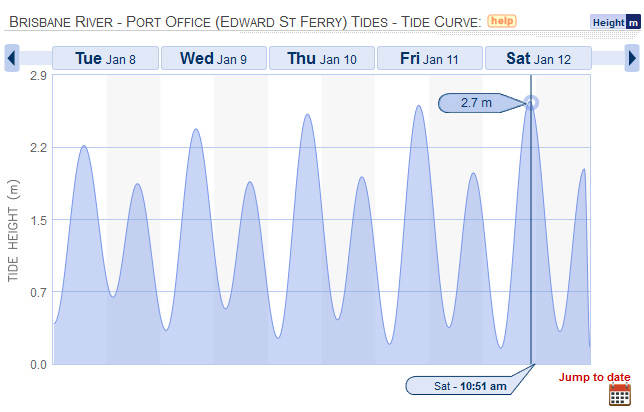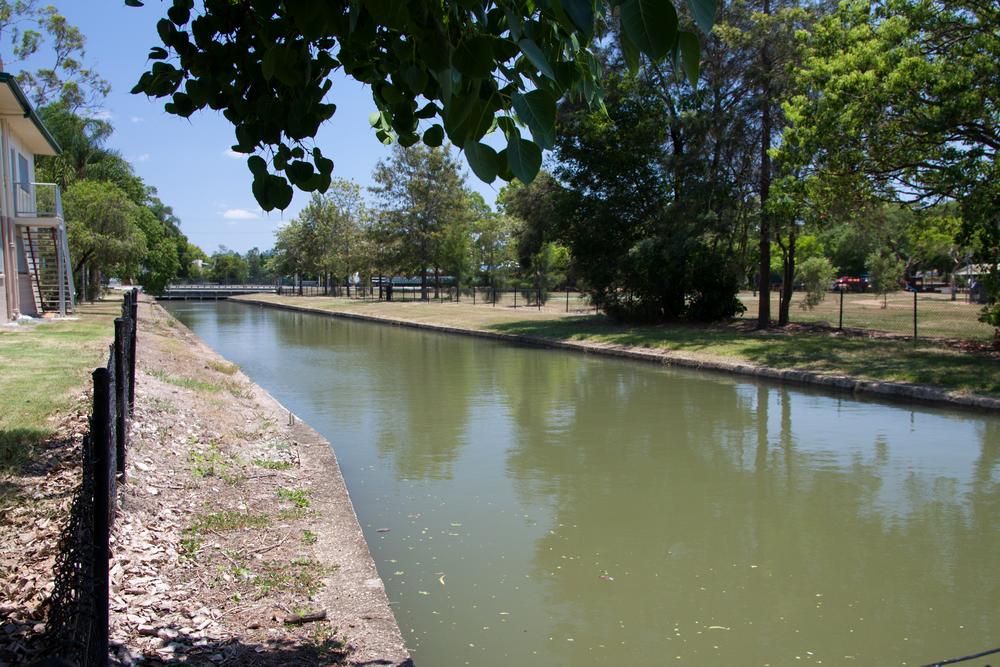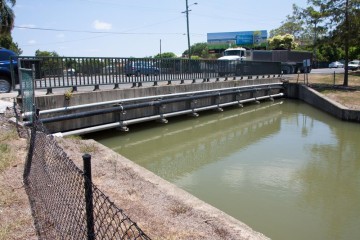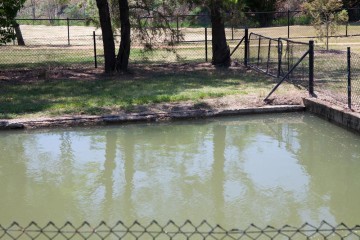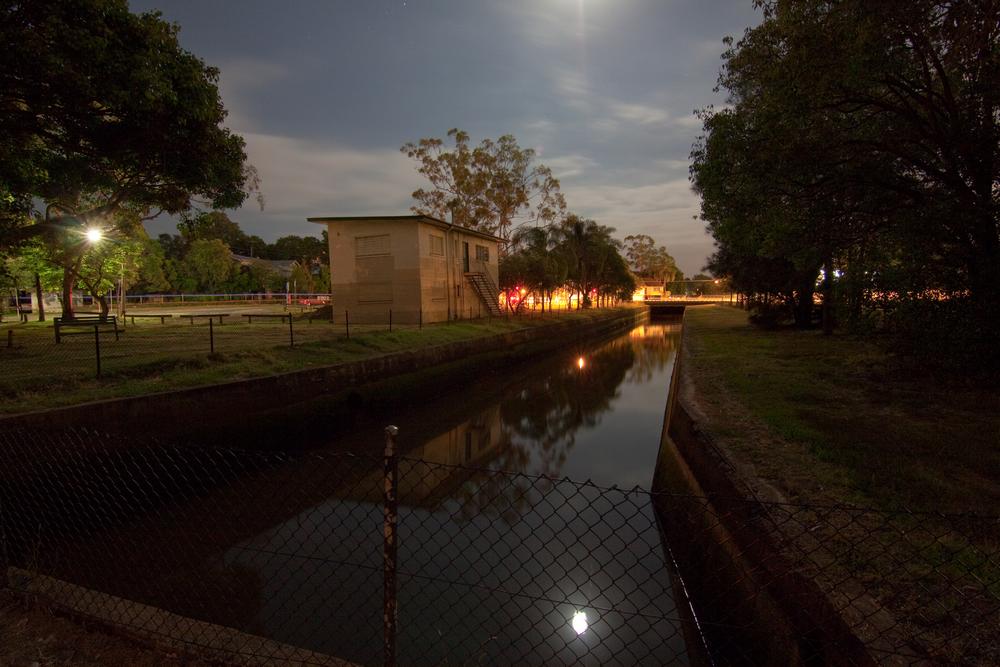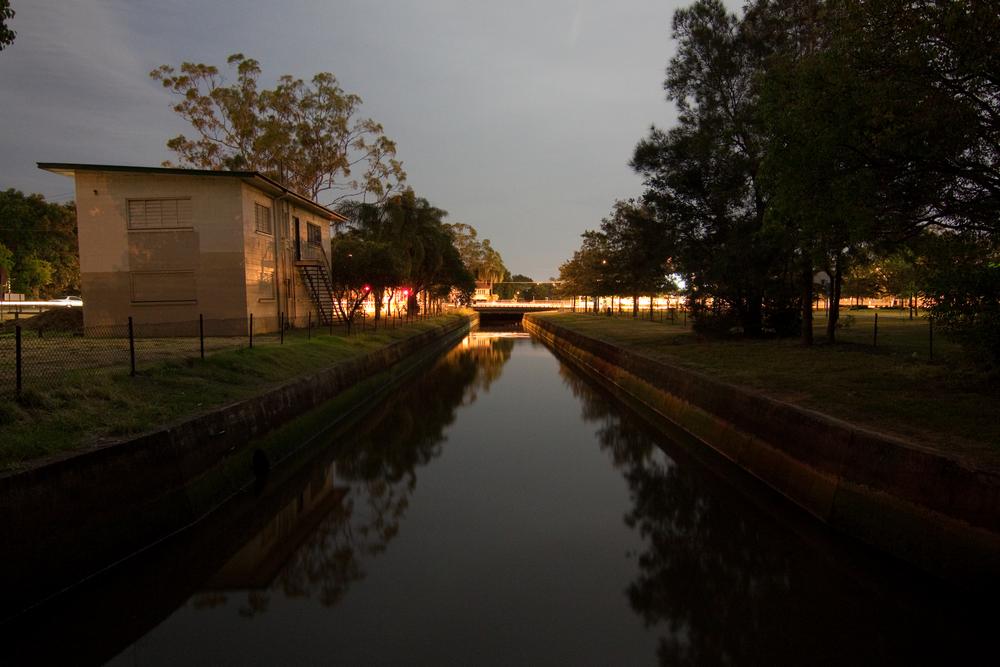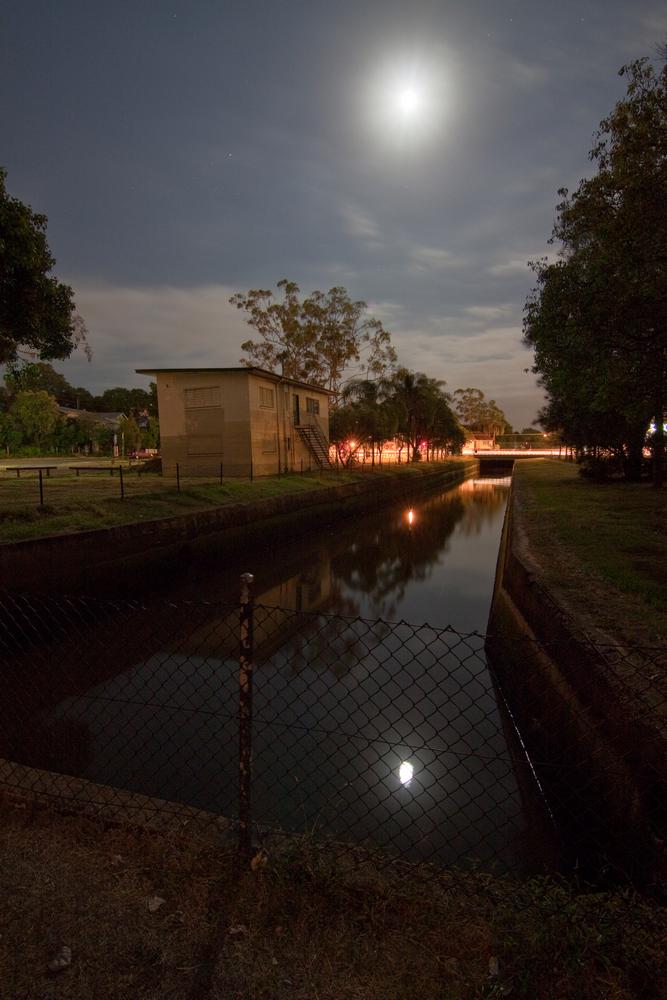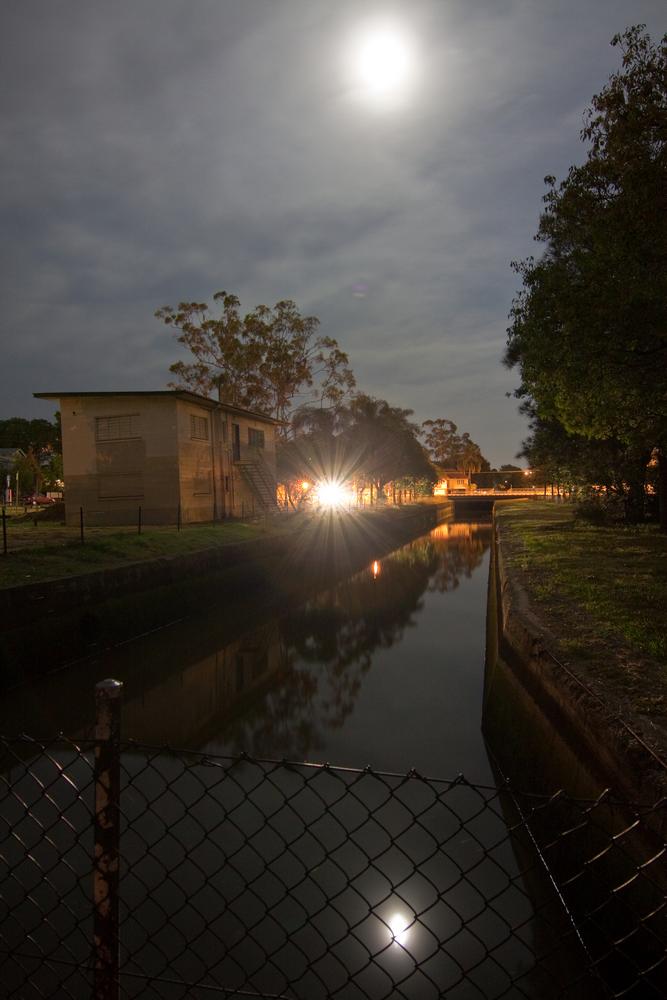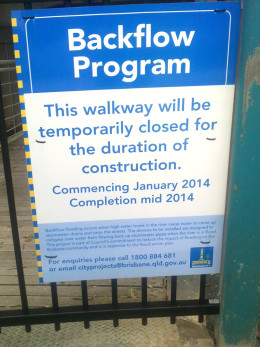
A sign announcing the construction of a backflow valve at the mouth of Western Creek. It is erected on the gate to the footbridge under Coronation Drive. (Photo: S. Cowley)
So, it’s really happening. If this sign is to be believed, then Western Creek is finally going to have its floodgate. The photo was snapped at the entrance to the footbridge under Coronation Drive at the mouth of Western Creek (otherwise known as the Milton Drain) a few weeks ago by Steven Cowley, who has been my eyes on the ground at Western Creek ever since I moved to the southside last year.
The sign doesn’t mention a floodgate, but that is essentially what the ‘devices to be installed’ as part of the ‘Backflow Program’ are. They are contraptions of varying designs that ‘mitigate river water from flowing back up stormwater pipes when the river is in flood’. Such devices have already been installed just downstream near Cribb Street and the Go-Between Bridge. The City Council’s website has a page listing all of the places where backflow devices have been, or might soon be, installed. The page also provides links to the technical reports about these devices that the council commissioned in the wake of the 2011 flood. Continue reading

